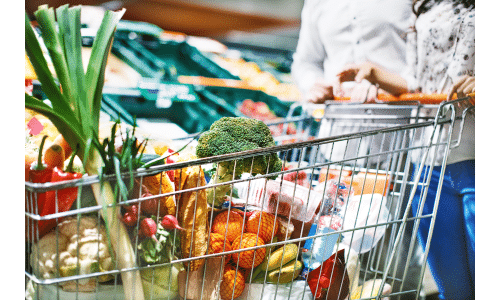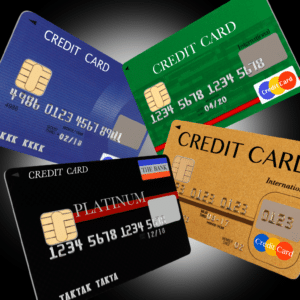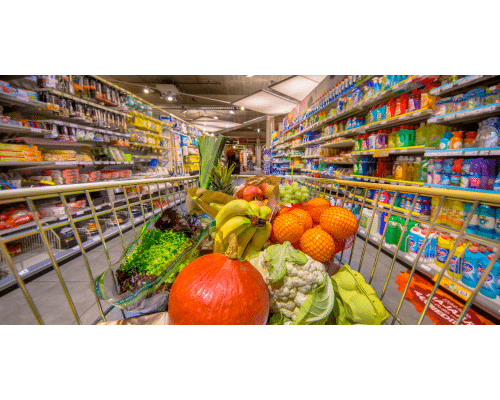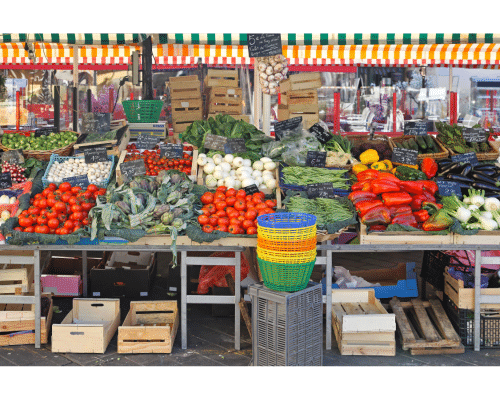Effective Ways To Save Money Grocery Shopping

Effective ways to grocery shop can help you save money.
The typical US resident spends an estimated $438 every month on food shopping. That’s quite a chunk of change!
If you’ve noticed your grocery bill creeping up and are looking for ways to reign it in, you’re not alone. In fact, 84% of people have reported seeing higher prices at their local supermarket since October 2022.
This trend has many consumers searching for effective Ways To Save Money on Grocery Shopping.
The Reality of Grocery Shopping Expenses
When it comes to the financial dynamics of households, grocery shopping plays a major role. It’s been estimated that Americans spend around $5,259 annually on groceries alone, translating into approximately $438 per month.
Since October 2023, an impressive majority of individuals have observed their preferred grocery stores increasing prices for a variety of items, from produce to meat and poultry. Since October 2023, an astounding 84% of people have noticed their favorite grocery stores hiking up prices across various categories, from fruits and vegetables to meat and poultry products.
In light of these facts, developing effective strategies for saving money during our necessary grocery shop is not just beneficial but crucial for maintaining healthy finances.
Rising Food Prices: A Closer Look
Increasing grocery prices result from global factors like trade wars, weather-related price shifts, and pandemic supply chain disruptions. Inflation and rising production costs add to the complexity
Navigating High Grocery Prices: Why Effective Strategies Matter
To manage high grocery costs, practical budgeting is crucial, ensuring nutritional needs are met without overspending
Efficient spending practices not only save on each trip but also enhance long-term financial stability, crucial in today’s unpredictable global climate.
Making Sense Of Your Spending Habits
Begin your savvy shopping journey by tracking your monthly expenses at various markets, including supermarkets and local stores.
While reviewing receipts may seem tedious, it’s valuable for understanding purchase patterns and saving on kitchen essentials. Don’t discard them; they hold hidden insights.
Key Takeaway:
Grocery shopping can strain your budget, but smart strategies like understanding spending habits and making conscious choices can help you save. Each receipt is an opportunity for savings.

Leveraging Credit Cards for Grocery Shopping
Think of credit cards as a secret weapon to save money on grocery shopping. You may not realize it, but your everyday purchases at the supermarket could earn you rewards and cash back if you use the right card.
The Blue Cash Preferred® Card from American Express is one such tool in this game. It offers an impressive 6% cash back at U.S. supermarkets on up to $6000 per year in purchases (then 1%). Imagine earning up to $360 a year just by using this card for your groceries.
But wait. There’s more. Other options, like certain wholesale club-specific cards, can also offer considerable savings. For instance, some give you 2% cashback with no cap limit; that’s unlimited earnings potential there.
Choosing the Right Credit Card
Selecting a credit card isn’t about picking any random option available; it should align with where and how often you shop for groceries. The key here is understanding your own habits before making a decision.
If Costco or Sam’s Club are places where most of your cart gets filled, then choosing their respective store-branded cards would be beneficial due to the tailored benefits these stores provide through them.
In contrast, those who prefer local supermarkets might find greater value in opting for something like the Blue Cash Preferred® Card from American Express, which provides higher percentage returns specifically at US-based supermarkets.
Beyond considering regular shopping locations, there are other factors influencing choice:
- Reward Rates: Evaluate what percentage each prospective card offers as cashback and whether they have annual caps.
- Fees: Certain cards come with yearly fees, so make sure the potential earnings outweigh the costs associated with maintaining them.
- Welcome Offers: Sometimes issuers throw enticing welcome bonuses into the mix, which include extra points or miles after meeting specific spending requirements within the first few months post-activation.
- Ease Of Redemption: Avoid getting caught solely on high reward rates and ensure the redemption process is simple without too many hoops to jump through.
Key Takeaway:
Boost grocery savings with the right credit card. Know your habits, choose one with store rewards, balance rates with fees, and ensure easy redemption. It’s not just about high cashback but also convenience.
The Power of Loyalty Programs
Loyalty programs at grocery stores are not just about earning points or discounts. They’re a strategic tool to save money, especially when food prices remain high compared to previous years.
Similar to AI enhancing content businesses’ profits, loyalty programs maximize grocery savings. Popular stores offer consistent rewards that accumulate and positively impact your budget.”
Whole Foods Market’s Amazon Prime members, for instance, enjoy exclusive deals and an extra 10% off sale items every day. On the other hand, Trader Joe’s keeps its pricing model simple with consistently low prices across all products instead of offering a traditional loyalty program.
Maximizing Benefits from Loyalty Programs
Effectively using rewards is like employing AI tools in business—it requires strategy and consistency. Always use your membership card when shopping at affiliated stores; forgetting means missing out on savings
Regularly checking promotions in these schemes is crucial for savvy savers, just as staying updated on market trends is vital for successful businesses. Offers change frequently, so stay vigilant to grab every deal.”
- Avoiding Store Monogamy: While collecting points in one scheme is tempting, don’t forget the power of comparison-shopping. Another retailer may offer better value, even without a loyalty program. Always explore your options.”
- Coupling With Other Saving Tactics: Strategically combining local supermarket rewards with other saving methods, like couponing (discussed later), can significantly cut food costs without sacrificing quality. It’s one of the easiest ways to save money today.
Key Takeaway:
Harness the power of grocery store loyalty programs to stretch your dollar further. Regularly use your membership card and stay updated on promotions for maximum savings. Don’t be monogamous with stores; comparison shopping is key. Combine these strategies with other saving tactics like couponing for a significant reduction in food costs.
Clipping Coupons and Using Rebate Apps
The rise of digital technology has not made traditional money-saving methods obsolete. Clipping coupons, a practice that dates back to the 19th century, remains an effective strategy for trimming your grocery budget. Many grocery stores still distribute weekly ads filled with deals and discounts that can be strategically used to reduce costs.
In addition to paper-based offers, many retailers now provide digital coupon options accessible via websites or mobile apps – another tool you should consider when aiming to save money on groceries.
Making Couponing Work For You
Successful couponing relies on organization. Use tools like envelopes or accordion files to categorize coupons by product type or store aisle, ensuring valuable discounts aren’t lost or wasted.
- Review available coupons before creating your weekly shopping list and meal plan to maximize savings and minimize waste from expired items
- Don’t purchase items solely because they’re discounted; prioritize those that match your planned meals for efficient spending
Digital rebate applications have emerged alongside traditional saving techniques, offering cashback rewards for purchases made at various retail outlets, including favorite grocery stores. Rakuten, for instance, is one such platform worth exploring. Make sure to use a compatible loyalty program that your preferred supermarket offers to get the most out of these platforms. Combining both strategies could lead to even greater savings.
Smart Shopping Strategies
Besides credit cards, loyalty programs, coupons, and rebate apps, there are more savvy shopping practices to control spending and maximize value on every supermarket trip
Meal Planning And Its Impact On Your Grocery Budget
Effective food expense management includes well-planned meal preparation to prevent impulse purchases and reduce ingredient waste. Meal planning saves money, time, and promotes healthier home-cooked meals, steering clear of unhealthy fast-food options with harmful additives
Understanding Store Layouts To Save Money
Grocery store layouts are typically designed in a certain way to lure customers into spending more than initially intended. Knowing how to navigate the store layout effectively helps you stay within budget, avoid unnecessary spending, and resist impulse buys, like those tempting checkout snacks that alleviate boredom while waiting in line
Key Takeaway:
Embrace the power of coupons and rebate apps to shave off your grocery bills. Keep them organized, use them wisely for necessary items, and pair them with loyalty programs for maximum savings. Also, smart meal planning can curb impulse buys while understanding store layouts helps avoid marketing traps.
Smart Shopping Strategies
The process of grocery shopping is more than just tossing items into a cart. It’s about being strategic and making informed choices to keep your grocery budget under control.
Meal Planning And Its Impact On Your Grocery Budget
A well-structured meal plan can be the cornerstone for efficient grocery shopping. By knowing what meals you’ll prepare in advance, every item on your list serves a purpose – reducing food waste and curbing unnecessary spending.
This strategy allows for optimal use of ingredients as many dishes can revolve around similar staple items. MyPlate Plan , provided by USDA, offers an excellent starting point for those new to meal planning.

Understanding Store Layouts To Save Money
Grocery stores are designed with layouts that encourage customers towards unplanned purchases – especially products at eye level or near checkout lines. Being aware of this layout will help shoppers resist these temptations and stick strictly to their pre-planned lists.
- Fresh produce often resides along store perimeters while packaged goods fill central aisles; focusing on outer sections may lead to healthier selections which typically cost less per serving compared with prepared or packaged alternatives.
- Cheaper options usually sit higher up or lower down shelves rather than directly at eye level where they’re easily spotted without effort.
Tips For Effective Grocery Shopping
- Create A List: Having a detailed list based on your weekly meal plan keeps focus sharp, preventing unnecessary expenditures.
- Beware Of Sales: Don’t let sale signs sway you from sticking within set plans unless it’s something used regularly.
- Avoid Pre-Packaged Items: Fresh fruits & vegetables, bulk grains, and cuts of meat generally offer better value over pre-packaged counterparts. Besides being cheaper, you have full control over preparation, a bonus point for health-conscious individuals.
- Evaluate Prices: Regularly compare prices between different brands, sizes, and even stores. Every penny counts.
- Purchase Generic Brands: Often times, generic brand products provide similar quality at fraction costs. Be open-minded when considering generic over name-brands, the savings could add up quickly. Come Prepared: If possible, bring reusable bags. Many places now charge extra for plastic bags. Plus, it’s eco-friendly too.
Key Takeaway:
Grocery shopping involves meal planning, store layout awareness, and wise decisions. Watch out for layout tricks, stick to your meal plan list, and opt for cost-effective choices like generic brands and fresh produce over pre-packaged items.
Remember, every penny counts.

Embracing Wholesale Clubs And Farmers Markets
Grocery shopping isn’t confined to your neighborhood supermarket. Considering other avenues like wholesale clubs and farmers markets can unlock considerable savings while ensuring quality products.
Deciding If A Wholesale Club Membership Is Worth It For You
A powerful player in the realm of grocery budgeting is a membership to a warehouse club such as Costco. These stores offer items in larger amounts for cheaper costs than standard retailers, which can often result in major savings for customers who buy goods in bulk.
Prioritize evaluating whether this option aligns with your lifestyle and needs before signing up for any memberships. Consider factors like storage space availability, consumption frequency of certain items, and proximity of these stores from where you live.
Investing in bulk purchases for non-perishables or household essentials can pay off over time. Yet, for smaller spaces or solo living, frequent smaller buys may be wiser despite slightly higher costs per item.
Finding Value In Local Farmers Markets
Beyond warehouse clubs, there’s another treasure trove: local farmers markets. While they may not offer loyalty programs or cash back rewards that some conventional grocery chains do, their appeal lies elsewhere – fresh produce directly from farms usually priced competitively.
- Farmers’ market vendors typically sell what’s currently being harvested, resulting in fresher produce that tends to last longer, thus reducing potential waste. Local Harvest, a comprehensive directory resource, helps locate nearby farmer’s market locations across America, making them easily accessible options for many households.
- Their unique charm extends beyond just cost-savings. Fresh produce picked directly from farms has been found to have more vitamins and minerals than those purchased in stores. This means better health benefits at the same price. Furthermore, supporting the local economy by purchasing directly from producers rather than middlemen is rewarding in itself.
- Navigating through different stalls laden with seasonal bounties also allows us to make informed choices about the foods we eat based on pricing trends and available stock. As a result, sticking to lists and meal plans becomes easier since we’re only picking what we need that is seasonally available, thereby avoiding unnecessary spending on impulse purchases.
Key Takeaway:
Maximize your grocery savings by considering wholesale clubs and farmers markets. Assess if bulk buying suits your lifestyle before investing in a club membership, as it can offer substantial long-term savings. Farmers markets provide fresh, nutrient-rich produce at competitive prices while supporting local economies and reducing impulse spending.
Making Informed Choices While Grocery Shopping
Grocery shopping can be a complicated endeavor, requiring careful consideration of prices, coupons and store mobile apps. Between comparing prices, clipping coupons, and navigating your favorite grocery store’s mobile app, there are many factors to consider when trying to save money on groceries.
In other words, the more you know about how much things cost – from fresh produce at Trader Joe’s versus Whole Foods Market to whether canned goods might offer similar nutritional value for less money than their fresh counterparts – the better equipped you’ll be to make decisions that keep both your wallet and pantry full.
The Impact of Meal Planning On Your Grocery Budget
A structured meal plan is crucial for healthy eating and budget management. It prevents impulse buying, which can lead to overspending and food waste as unused items spoil.
So next time you head out the door, don’t forget to bring a list, check the app for any deals available, compare prices between brands, and consider generic alternatives to pricier name-brand items. Every little bit counts on the journey to financial freedom.
Leveraging Reward Cards And Mobile Apps To Save Money
- Your favorite grocery store’s loyalty program card should always accompany you whenever you’re shopping because these programs often provide exclusive discounts accessible through membership use alone.
- Grocery rewards cards offered by major chains across America allow shoppers to earn points with each purchase redeemable for future savings.
- Digital rebate apps like Ibotta or Rakuten provide cash back offers on specific products once proof-of-purchase has been submitted digitally after checkout. These applications could prove invaluable in keeping within budgetary limits without compromising the quality of the lifestyle we aspire to live up to.
- Retailers’ dedicated mobile applications providing digital coupons along with real-time updates on sales events happening in-store are must-have tools for savvy shoppers looking to save during their next visit.
Remember, making informed decisions isn’t just beneficial for your wallet; it’s a sustainable approach to consumption that promotes mindful spending and reduces environmental footprint too. So let us all strive to become smarter consumers in every aspect of life, including where it matters most: our daily meals.
Key Takeaway:
Master the art of grocery shopping by making informed choices, planning meals, and leveraging rewards cards and mobile apps. Not only will these strategies keep your wallet happy but they also promote sustainable consumption – a win-win for you and the environment.
How to save money on groceries with these 15 lesser known hacks?
- Price Drop Refunds: Some stores offer price drop refunds if an item you bought goes on sale shortly after your purchase.
- Perimeter Shopping: Stick to the outer aisles of the store where fresh produce, meat, and dairy are located to avoid impulse buys in the center aisles.
- Double Coupon Stacking: Certain stores allow you to use both manufacturer and store coupons on a single item for double savings.
- Rain Check Requests: If a sale item is out of stock, ask for a rain check so you can get the discounted price when it’s back in stock.
- Applying for Special Discounts: Some stores offer additional discounts for students, seniors, military personnel, or specific professions.
- Timing Discounts: Shop during the “golden hour” when stores mark down items nearing their sell-by date, often in the early morning or evening.
- Register Receipt Surveys: Participate in surveys printed on your receipt to receive discounts or free items on your next visit.
- Flash Sales Near Closing Time: Look out for surprise discounts as stores try to clear inventory before closing.
- Use Loyalty Card Stacking: Combine loyalty card discounts with in-store sales and coupons for maximum savings.
- In-Store Price Matching: Some stores match competitors’ prices, so bring ads to take advantage of lower prices.
- Price Tag Code Decoding: Learn to read price tags to decipher if an item is on clearance or discounted further.
- Utilize Free Samples: Some stores offer free samples of products, which can act as small snacks or even replace a planned purchase.
- Hidden Discount Sections: Find shelves where they significantly discount items nearing expiration, marked as ‘reduced to clear’.”
- Butcher’s Specials: Ask the butcher for any discounted or off-cut meats that are not on display.
- Unadvertised Deals: Hunt for unadvertised sales or clearance items that they might not prominently display.
By incorporating these lesser-known strategies into your grocery shopping routine, you can maximize your savings and make the most of your budget.
Conclusion:
Understanding the reality of grocery shopping expenses is the first step towards saving money.
Utilizing a credit card that caters to your shopping preferences can be an effective way of maximizing savings on groceries.
Don’t underestimate the power of loyalty programs; they can lead to significant savings over time.
Clipping coupons and using rebate apps are both traditional and modern ways to save on groceries.
Smart shopping strategies like meal planning, understanding store layouts, embracing wholesale clubs and farmers markets also play crucial roles in keeping our budget under control.
Making informed choices while grocery shopping isn’t just about being aware of pricing trends or utilizing available tools; it’s about making decisions that align with your financial goals.
If you’re ready to take charge of your finances by learning more effective ways to save money grocery shopping, consider visiting Wallet Hackers. Here we provide tips on how not only to cut down on your spending but also build wealth effectively. Start hacking into smarter financial decisions today!


